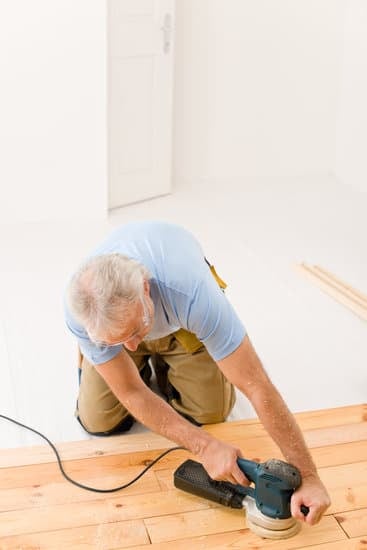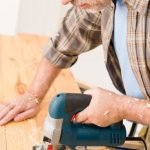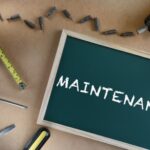When embarking on a home improvement programme, one common concern that homeowners face is the inevitable dust that comes with the process. Dust can not only create a mess but also pose health risks to those exposed to it. In this article, we will discuss how to prevent dust from home improvement programmes and provide practical tips to minimize its impact on your living space.
Dust prevention is crucial in ensuring a clean and healthy environment during and after a home renovation project. Not only does dust contribute to allergies and respiratory issues, but it can also damage furniture, electronics, and other household items. By taking proactive steps to control and eliminate dust, you can improve both the air quality in your home and the overall success of your project.
One key aspect of preventing dust during home improvement projects is proper planning. By preparing the work area efficiently, you can reduce the amount of dust produced and better contain any that does accumulate. From creating dust barriers to utilizing appropriate ventilation systems, there are several strategies you can implement to keep dust at bay throughout your renovation journey. Let’s explore some effective ways to tackle this common issue and ensure a cleaner, healthier home environment.
Importance of Dust Prevention
The importance of preventing dust during home improvement projects cannot be overstated, as it not only impacts the cleanliness of your living space but also has detrimental effects on health and the environment. Dust particles can contain allergens, mold spores, and other harmful substances that can exacerbate respiratory issues such as asthma or allergies. Additionally, excessive dust in the air can contribute to air pollution and environmental contamination.
To prevent these negative effects, it is crucial to take proactive measures before starting any home improvement programme. One of the key ways to do this is by planning ahead and strategizing how to minimize dust production during the project.
This can include sealing off rooms with plastic sheeting, removing unnecessary items that can gather dust, and covering furniture with protective covers. By preparing the work area properly, you can significantly reduce the amount of dust that spreads throughout your home.
Proper ventilation is another essential aspect of dust prevention during home renovations or improvements. Good airflow helps to keep dust particles from settling on surfaces and circulating in the air. Opening windows, using fans, or installing a temporary ventilation system can all help in keeping the air clear of dust. Maintaining a well-ventilated workspace not only promotes a healthier indoor environment but also aids in controlling dust levels effectively.
| Factors | Importance |
|---|---|
| Health Effects | Preventing respiratory issues and allergies |
| Environmental Impact | Air pollution and contamination prevention |
| Planning Ahead | Minimizing dust production in work areas |
Planning Ahead
When embarking on a home improvement project, one of the most important steps in preventing dust from spreading throughout your home is proper planning and preparation. Taking proactive measures before starting any work can significantly reduce the amount of dust generated during the project. Here are some tips on how to prepare the work area for minimal dust production:
Clearing Out the Space
Before starting any construction or renovation work, it is crucial to clear out the work area of any unnecessary items, furniture, or decorations. This not only provides more space for the workers but also reduces the amount of surfaces where dust can settle and accumulate. By decluttering and removing personal belongings, you can prevent them from getting covered in dust during the home improvement programme.
Sealing Off Adjacent Rooms
Another effective way to minimize dust spread is by sealing off adjacent rooms that are not part of the renovation project. Use plastic sheeting or tarps to cover doorways, vents, and openings to prevent dust particles from traveling into other areas of your home. This containment strategy helps maintain a cleaner environment in unaffected spaces and makes cleanup easier once the project is completed.
Covering Flooring and Furniture
Protect your floors and furniture by covering them with heavy-duty drop cloths or plastic sheeting. This extra layer acts as a barrier against dust settling on surfaces, making post-project cleaning simpler and faster. Ensure that all exposed flooring is adequately covered, especially if you have carpets or rugs that are prone to trapping dust particles. Additionally, covering furniture with protective materials prevents damage or staining during construction activities.
Proper Ventilation
One effective way to improve ventilation during a home improvement project is by opening windows and doors to allow fresh air to circulate. Additionally, using fans or air purifiers can help remove airborne particles and maintain a cleaner working environment. Ensuring that your HVAC system is clean and functioning properly also contributes to better airflow and dust control.
In addition to improving indoor air quality, proper ventilation can also benefit your health by minimizing exposure to harmful substances that may be present in dust particles. By incorporating good ventilation practices into your home improvement programme, you not only reduce dust accumulation but also create a healthier living space for you and your family.
| Proper Ventilation Benefits | Ways to Achieve Proper Ventilation |
|---|---|
| Reduces dust accumulation | Open windows and doors |
| Improves indoor air quality | Use fans or air purifiers |
| Promotes a healthier living environment | Maintain clean HVAC system |
Use of Dust Barriers
During a home improvement project, one of the key strategies to prevent dust from spreading throughout the entire house is to create barriers that contain the dust within the work area. By implementing effective dust barriers, homeowners can minimize the cleanup required after the project is complete and reduce potential health risks associated with airborne particles.
To effectively create dust barriers, consider the following strategies:
- Seal off doors and windows with plastic sheeting or drop cloths to prevent dust from traveling to other rooms.
- Use zippered plastic barrier systems to easily access the work area while maintaining a barrier against dust.
- Install temporary walls made of drywall or plywood to create a physical separation between the work area and the rest of the house.
Implementing these simple yet effective strategies can significantly reduce the spread of dust during a home improvement project. By containing the dust within a designated work area, homeowners can maintain a cleaner and healthier living environment throughout their renovation process. It is important to prioritize dust prevention measures to ensure both short-term and long-term well-being for all occupants of the household.
Remember, proper planning and preparation are key when it comes to minimizing dust during home improvement projects. By incorporating these strategies into your renovation plans, you can enjoy a smoother and cleaner process while protecting your health and indoor air quality from hazardous airborne particles.
Dust Control Equipment
During a home improvement project, dust control equipment plays a crucial role in minimizing dust and maintaining a clean work environment. By utilizing the right tools and equipment, you can effectively prevent dust from spreading throughout your home. Here are some essential tools and equipment to help you control dust during your home improvement programme:
- HEPA Vacuum Cleaner: Investing in a high-efficiency particulate air (HEPA) vacuum cleaner can help capture fine particles of dust that regular vacuums may miss. Make sure to empty the vacuum frequently to prevent dust from being redistributed.
- Dust Extractor: A dust extractor is ideal for capturing airborne dust at the source, such as when cutting or sanding materials. This tool helps prevent dust from dispersing into the air and settling on surfaces.
- Protective Gear: Personal protective equipment like respirators, goggles, gloves, and coveralls are essential for safeguarding yourself from inhaling or coming into contact with harmful dust particles during construction or renovation tasks.
In addition to these essential tools, consider using the following equipment for effective dust control:
- Dust Masks: Disposable or reusable masks can provide respiratory protection by filtering out dust particles while working in dusty environments.
- Air Scrubber: An air scrubber helps improve indoor air quality by removing airborne particles and contaminants. It’s especially useful for reducing dust levels during and after renovation projects.
- Dust Mop/Wet Mop: Regularly mopping floors with a damp mop can help pick up settled dust and prevent it from becoming airborne again.
By incorporating these tools and equipment into your home improvement programme, you can effectively control dust levels, protect your health, and maintain a clean living space throughout the project. Remember that proper maintenance of these tools is essential for their continued effectiveness in preventing dust accumulation in your home.
Cleaning and Maintenance
Schedule Regular Cleaning
One of the key ways to prevent dust buildup during home improvement projects is to schedule regular cleaning sessions. Dust can accumulate quickly, especially in areas where construction or renovation work is taking place. By setting aside time each day to clean up any dust that has settled, you can effectively minimize the amount of dust in your living space. Use a damp cloth or microfiber mop to wipe down surfaces and remove dust particles from the air.
Use Air Purifiers
Investing in an air purifier can also help in preventing dust buildup during a home improvement programme. Air purifiers are designed to filter out dust, allergens, and other particles from the air, promoting cleaner indoor air quality. Place an air purifier in the room where the renovation work is happening to capture dust before it spreads throughout your home. Make sure to clean or replace the filters regularly for optimal performance.
Implement Dust-Reducing Habits
In addition to regular cleaning and using air purifiers, implementing dust-reducing habits can further help prevent dust buildup during a home improvement project. Encourage everyone in your household to take off their shoes before entering the work area to prevent tracking dirt and dust into other parts of the house. Consider using doormats at entry points and closing off vents or ducts that lead into rooms undergoing renovations to minimize dust circulation.
By following these guidelines for regular cleaning and maintenance, you can significantly reduce dust buildup during a home improvement programme. Taking proactive steps to control and prevent dust not only improves the overall cleanliness of your living environment but also contributes to better health for you and your family members. Remember that consistency is key when it comes to maintaining a clean and healthy home during renovation projects.
Professional Assistance
In conclusion, when embarking on a home improvement project, it is essential to address the issue of dust control to ensure a clean and safe environment for both residents and workers. By following the tips and strategies outlined in this article, homeowners can effectively prevent dust from becoming a major nuisance during renovations. Planning ahead, ensuring proper ventilation, using dust barriers, investing in dust control equipment, and maintaining cleanliness are all key steps in minimizing dust production.
One important aspect that cannot be overlooked is knowing when to seek professional assistance for larger home improvement projects. While DIY efforts can be effective in controlling dust to some extent, there are instances where the expertise and specialized equipment of professionals may be necessary. Professional dust control services have the knowledge and experience to tackle even the most challenging projects, ensuring thorough containment of dust particles throughout the renovation process.
Ultimately, by taking proactive measures to prevent dust accumulation during home improvement programmes, homeowners can not only maintain a cleaner living space but also safeguard their health and the environment. Whether through simple preparations or seeking expert help when needed, prioritizing dust control is crucial for a successful renovation project.
Remember that with the right approach and guidance on how to prevent dust from home improvement programme, your home can remain free of unwanted particles and debris throughout the renovation process.
Frequently Asked Questions
How Do I Protect My House From Dust During Renovation?
To protect your house from dust during renovation, there are a few steps you can take. First, seal off the renovation area with plastic sheeting to prevent dust from spreading.
Additionally, cover vents and openings with tape or filters to limit dust entry. Using fans with HEPA filters can also help improve air quality and reduce dust particles in your home.
How Do I Get Rid of Dust in My House After Renovating?
After renovating, getting rid of dust in your house is crucial for maintaining a clean environment. Start by vacuuming all surfaces, including furniture, walls, and floors.
Wiping down surfaces with a damp cloth can also help capture remaining dust particles. Utilizing an air purifier can further improve air quality by trapping fine dust particles that may still be lingering in the air.
How Do You Isolate a Room During Construction?
When isolating a room during construction, it’s important to create a barrier that effectively contains dust and debris. Seal windows, doors, and any other openings with plastic sheeting or temporary walls to prevent contaminants from spreading.
Consider using zippered enclosures for easy access while maintaining containment. Implementing negative air pressure by utilizing fans can also help redirect airflow away from unaffected areas and control the spread of dust.

I’m thrilled to have you here as a part of the Remodeling Top community. This is where my journey as an architect and remodeling enthusiast intersects with your passion for transforming houses into dream homes.





